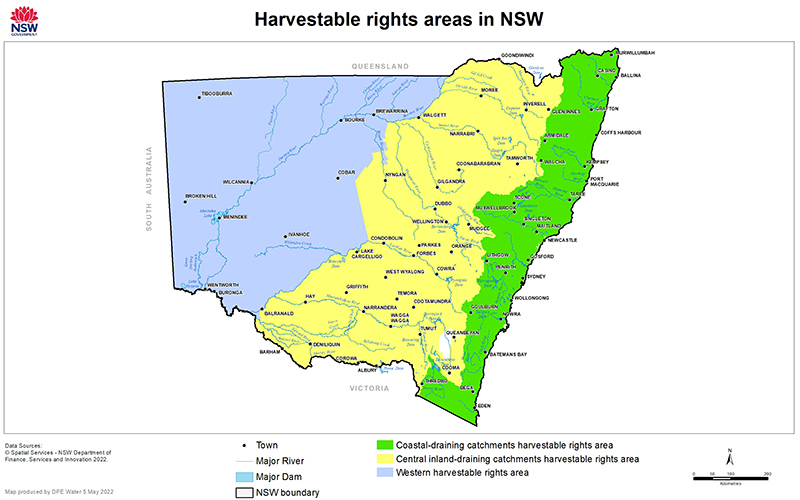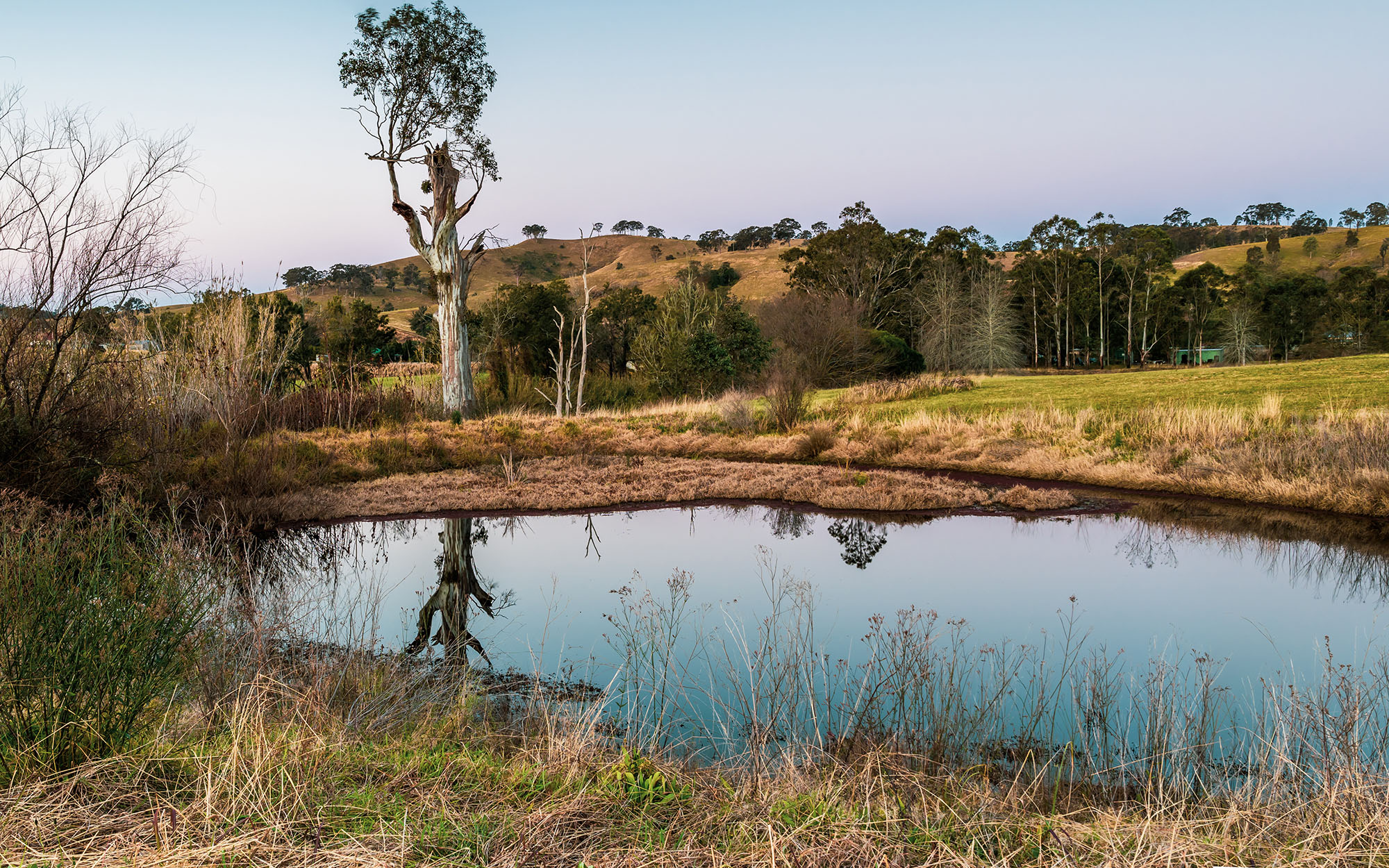The harvestable rights limit for coastal-draining catchments was returned to 10% of rainfall runoff in September 2023 (from 30%, which applied from May 2022). Updates were also made to harvestable rights orders for the coastal-draining and central-inland draining catchments to ensure they can be interpreted and applied as intended.
Landholders in these catchments should read the information provided on this page, our coastal-draining and central inland-draining catchments page and refer to our frequently asked questions to make sure they understand how the rules have changed and the reasons for the change.
Harvestable rights allow landholders (owners or occupiers of land) to capture and store a proportion of the rainfall runoff from their landholding in one or more harvestable rights dams without a water access licence, water supply work approval or water use approval.
Harvestable rights dams can be located on:
- non-permanent minor streams
- hillsides
- gullies
but cannot be located:
- within 40 metres of a third-order or higher order stream
- within 3 kilometres upstream of a wetland of international importance (listed under the Ramsar Convention).
These rules are slightly different for the Western Division harvestable rights area. See our frequently asked questions for more details.
Each landholding has a maximum harvestable right dam capacity, which depends on the location and size of the landholding.
Harvestable rights areas and how harvestable rights water can be used
The proportion of rainfall runoff that may be captured under harvestable rights depends on where a landholding is located.
In the:
- coastal draining catchments and central inland-draining catchments harvestable rights areas (previously the Eastern and Central Division) – up to 10% of the average annual regional rainfall runoff may be captured and used for any purpose.
- Western Division – all rainfall runoff may be captured and used for any purpose.
The boundaries of the harvestable rights areas are shown in the map below.

Download a high resolution version of the map (JPG, 876.85 KB).
Maximum harvestable right dam capacity
The volume of water a landholder can capture and store as a harvestable right is expressed as a maximum harvestable right dam capacity for a landholding.
The combined volume of all dams (or parts thereof) that capture and store harvestable rights water cannot exceed the maximum dam capacity.
To calculate the maximum dam capacity for a landholding, landholders must use the Maximum Harvestable Rights Dam Capacity Calculator. The calculator considers the size and location of the landholding.
Before constructing or enlarging a harvestable rights dam or changing the use of an existing dam to a harvestable rights dam, landholders need to determine the existing capacity of harvestable rights dams on their landholding. This will allow the landholder to calculate how much extra water can be captured within the allowable limit.
Landholders should keep a record of the maximum harvestable right dam capacity from the online calculator for monitoring and compliance.
For information on determining dam capacity, read our frequently asked questions.
Approvals for harvestable rights dams
Dams built to capture and store harvestable rights water do not require a water access licence, water supply work approval or water use approval.
However, dams that store water captured under harvestable rights as well as water taken under another right or licence (known as ‘mixed-rights' dams) may require a water access licence and water supply work approval before construction.
Harvestable rights permit the capture of rainfall runoff moving naturally across the landscape. Any channels or diversion works constructed to capture and transfer rainfall runoff into a harvestable rights dam are not provided for under a harvestable right. They may require approval prior to construction.
More information on constructing harvestable rights dams, water licences and approvals is available on the WaterNSW website.
Landholders should also be aware of, and seek other consent or approvals that may be applicable under legislation such as the:
- Environmental Planning and Assessment Act 1979 (includes rules under Local Environment Plans - contact your local Council)
- Fisheries Management Act 1994 (see Activities requiring a permit)
- Crown Land Management Act 2016
- Biodiversity Conservation Act 2016
- Coastal Management Act 2016.
Failure to comply with the above requirements may result in compliance action, including removal of unauthorised structures.
Harvestable rights orders
Harvestable rights areas and the rules for capturing and using water as a harvestable right are specified in harvestable rights orders.
In September 2023, the following orders commenced:
- Harvestable Rights (coastal-draining catchments) Order 2023
- Harvestable Rights (central-inland draining catchments) Order 2023
The Harvestable Rights – Western Division Order remains unchanged. See NSW Government Gazette number 40 dated 31 March 2006 (pages 1628 to 1631).
More information
For more information about harvestable rights, see the fact sheets or contact our Water Enquiries line on 1300 081 047 or water.enquiries@dpie.nsw.gov.au.
You can also read more on the harvestable rights in coastal-draining catchments and central inland-draining catchments page.
Water news
Subscribe to our monthly newsletter Water News for updates on water management in NSW.
Subscribe